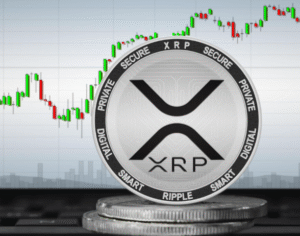$USDC $DAI #Stablecoin #CryptoPayments #Blockchain #DigitalCurrency #Fintech #B2B #PaymentSolutions #CryptoAdoption #Web3 #FinancialInfrastructure #Innovation
Why Are More People Choosing Stablecoin Payments Now?
The latest stablecoin news reveals a significant shift in the cryptocurrency landscape. Business-to-business (B2B) transfers have taken center stage, marking a pivotal transition of stablecoins from mere trading tools to essential components of mainstream payment infrastructures. This transformation speaks volumes about the growing acceptance of stablecoins in everyday transactions.
Stablecoins, designed to maintain a stable value by pegging to traditional currencies or assets, have gained traction as reliable payment methods. Businesses increasingly recognize their advantages, such as lower transaction fees and faster processing times compared to traditional banking systems. As a result, the volume of stablecoin transactions is surging, reflecting a broader trend toward the integration of digital currencies in financial operations.
One reason for this shift is the increasing demand for efficient payment solutions in a globalized economy. Companies are looking for ways to optimize cash flow and reduce costs. Stablecoins offer a unique solution by facilitating cross-border transactions without the need for currency conversion, thereby minimizing exchange rate risks. Moreover, the transparency and traceability of blockchain technology provide additional security for businesses that prioritize compliance and auditability.
The Role of Regulatory Developments in Stablecoin Adoption
As regulatory frameworks around cryptocurrencies continue to evolve, businesses are gaining confidence in using stablecoins for transactions. Governments worldwide are exploring ways to integrate these digital assets into their financial systems, which can foster a more stable environment for businesses. With clearer regulations on the horizon, companies may feel more comfortable embracing stablecoin payments, knowing that they are operating within legal parameters.
Furthermore, the rapid evolution of payment technologies is another catalyst for this transformation. Companies are increasingly adopting advanced payment processing systems that integrate stablecoins as part of their offerings. This integration enables businesses to streamline their operations and cater to a tech-savvy customer base that prefers digital payment methods.
The Future of Stablecoin Payments: Opportunities and Challenges
Looking forward, the potential for stablecoin payments is enormous. As more businesses adopt these digital currencies, we may witness a paradigm shift in how financial transactions are executed. The rise of decentralized finance (DeFi) platforms also opens up new opportunities for stablecoin utilization. These platforms enable users to lend, borrow, and trade assets more efficiently, with stablecoins often serving as the backbone of such transactions.
However, challenges remain. Issues such as regulatory uncertainty, market volatility, and the need for greater interoperability between different stablecoins and blockchain networks must be addressed to ensure the long-term viability of stablecoin payments. Companies must stay informed about these developments to navigate the evolving landscape effectively.
In conclusion, the increasing popularity of stablecoin payments reflects broader trends in the financial world. As businesses strive for efficiency and reliability, stablecoins are set to play a crucial role in shaping the future of digital transactions. For more insights on crypto trends, visit our crypto section. Additionally, if you’re looking to start using stablecoins for your transactions, consider exploring options available through Binance for secure and efficient trading.











Comments are closed.